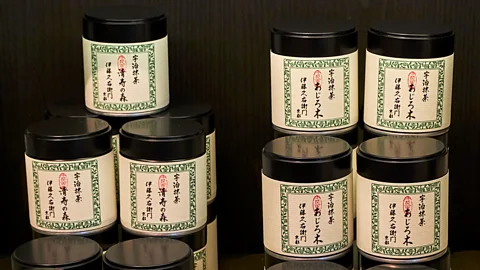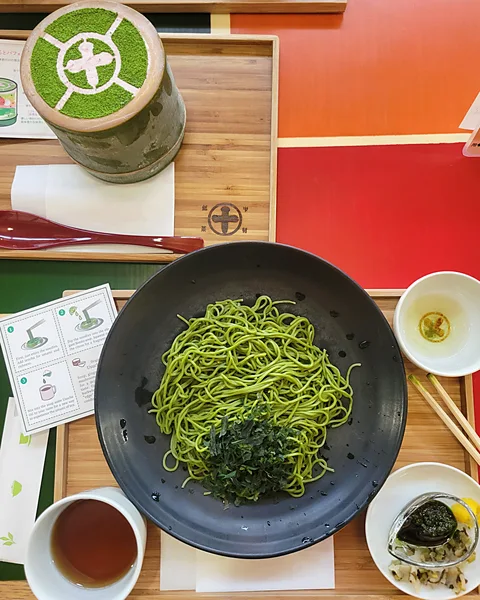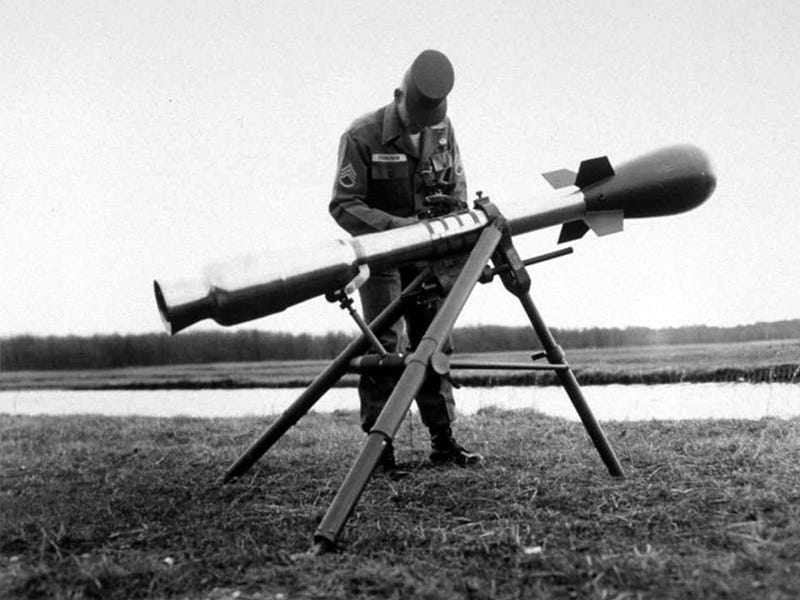Who drank all the matcha? How tourism drained a Japanese town
While I wait, I stroll through the shop and browse the many matcha products lining the shelves – ice creams, confections, even matcha-infused noodles. But I'm looking for some of the actual stuff: matcha powder.
I notice a lady with a basket full of green tins, and a commotion breaks out in the corner. A diminutive Japanese store worker tries to restock a shelf, but she barely places a tin down before it is eagerly snatched up in the throng of tourists. She is swarmed on all sides by grabby arms, and some people even reach directly into her basket to snag canisters of the precious powder. She yells out in Japanese, but her message is lost on the foreign ears surrounding her.
Realising these are the few matcha tins left in the shop, I reach into the crowd to wrap my fingers around a white canister. Someone grabs my hand, then grunts and lets go. A second later, a tall woman with an American accent yells out, "It's gone. All the matcha's gone." My guess is that it's not past 10:05.

 Alamy
Alamy
I join the queue to pay for my 30g tin, not knowing exactly what I've grabbed or how much it costs. I surmise that I didn't get the more potent of matchas, as others have tins of varying shades of green. I watch enviously as a man in the front of the line has 30 or so tins sealed in a tax-free plastic bag. In a German accent he says, "I can't believe I just spent 250 euros on tea." He seems proud.
Unlike many of the other prestigious tea purveyors in Uji, Nakamura Tokichi has not imposed a limit on the number of matcha tins visitors can buy. I spend the rest of the morning wandering around town, picking up whatever is still available here and there. Tsujirihei Honten, another prestigious brand established in 1860, advertises 20 or so types of matcha, but only has three or four varieties on offer. Even with a purchase limit, most of the stores in Uji, the matcha capital of the world, are sold out.
World's Table
BBC.com's World's Table "smashes the kitchen ceiling" by changing the way the world thinks about food, through the past, present and future.
Rich with antioxidants and with a more tempered caffeine boost, matcha has seen skyrocketing demand around the world. Japan's Ministry of Agriculture, Forestry and Fisheries reports that 4,176 tons of matcha were produced in 2023, a threefold increase since 2010. Ballooning in parallel is Japan's tourism industry: 2024 saw nearly 37 million tourists, a record high. Market reports show that the beverage's popularity is largely attributed to its health benefits, and the grinch-green drinks and desserts also play well on social media.
There's no singular grading system for matcha, but many shops will broadly categorise their powders as ceremonial, premium or culinary. Ceremonial matchas are typically made from the newest leaves of the season and are valued for their rich, almost umami flavour, with no bitterness. On the other end of the matcha-tasting spectrum is culinary matcha, which tends to be coarser and has a slight bitter taste – better suited for saccharine confections. Falling in between the two are premium or daily use grades, which are versatile in use.

 Alamy
Alamy
Tomomi Hisaki, general manager at the Tsujirihei flagship store, says that international visitors have a particular proclivity for top-grade ceremonial matchas and often buy stashes in bulk. But she says supply cannot keep up with demand. "High-grade Uji matcha is not something that can be mass-produced in the first place," she says. For one, tea leaves destined for ceremonial matcha are grown in the shade, as the darkness produces a richer, more umami and astringent flavour. "However, if you cover it, it will not be able to photosynthesize, so it will not grow, and the harvest will be small," she says.
Another bottleneck in production, Hisaki explains, is the traditional stone mills. These mills produce a particularly fine powder, but each mill can only yield about 400g of tea after eight hours – enough for 13 tins. Matcha production could be boosted by planting more tea farms, Hisaki says, but it would take years for current investments to reach store shelves.
This scarcity of Uji-made ceremonial matcha fosters a sense of exclusivity, which further fuels the zeal of tourists. Hisaki says that since the start of the year, their store will sell a month's supply of matcha powder in a single day. And if the frenzy continues, she says, tea ceremony instructors, temples and shrines could have difficulty securing supply.
"We have heard reports of ceremonial matcha being used for lattes and smoothies, which can reduce the availability of high-quality matcha for those who wish to enjoy it in its traditional form," says Simona Suzuki, president of the Global Japanese Tea Association. "Our hope is that foreign tourists will consider the intended use when purchasing matcha."
I kept thinking back to the man at the front of the line and those like him, hoarding hundreds of dollars' worth of matcha. What could one possibly do with so much of the finest quality tea?
I don't know that man, but I suspect he wasn't buying the matcha for tea ceremonies. I suspect that like me, he and the folks back home enjoy diluting the beverage with milk and sugar in the form of a matcha latte, maybe even baking a batch of cookies. I also suspect that most folks, like me, don't have a refined enough palate to distinguish between the top tiers of matcha. Plus, the grassy green product loses its freshness after sitting in a pantry for months.

 Marina Wang
Marina Wang
Yet I see that when we're hundreds of miles from home and the opportunity arises, it can be all too tempting to drop our polite inhibitions and allow greed to overtake our graces. How many tins would I have taken, given the opportunity?
"I think it's wonderful that the matcha of Japan is spreading," says Hisaki, "I would like more people to enjoy it for health, tea ceremonies and cultural inheritance." But she urges visitors not to hoard supplies for resale.
Shopping in Uji became more stressful than I anticipated, as I spent my time wondering if I should be trying to snag the last remaining tins of matcha in town. But even if visitors miss out on taking home a stash of ceremonial matcha, there's no shortage of other products to enjoy. Suzuki hopes that travellers will turn an eye toward other teas such as vibrant senchas or earthy gyokuros. There's also hojicha, the roasted cousin to matcha that tastes more of nuts and chocolate than chlorophyll, and – in my opinion – tastier than matcha.
Despite the shortage of matcha powder, Uji is still like a tea-themed park with an endless diversity of products. At Nakamura Tokichi I order a tea-infused soba noodle and matcha parfait, and from souvenir shops I purchase matcha fettuccine and curry. Eateries dish up matcha gyozas, takoyaki and ramen.
At Tsujirihei, I purchase a bag of sweetened matcha powder, a product designed to be easily dissolved in water – ideal for matcha lattes or other sweet drinks. I'm sipping on this sort of instant matcha latte now, enlivened by its verdant greenness and soothed by its warmth. Sure, this drink wasn't served to the emperor, but it suits my purposes just fine.
--
If you liked this story, sign up for The Essential List newsletter – a handpicked selection of features, videos and can't-miss news, delivered to your inbox twice a week.
For more Travel stories from the BBC, follow us on Facebook, X and Instagram.












